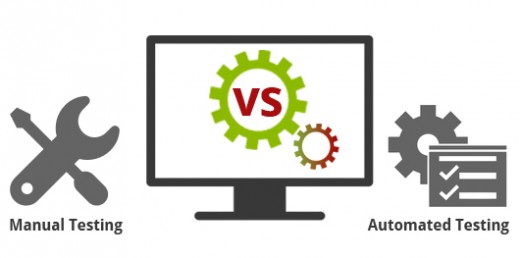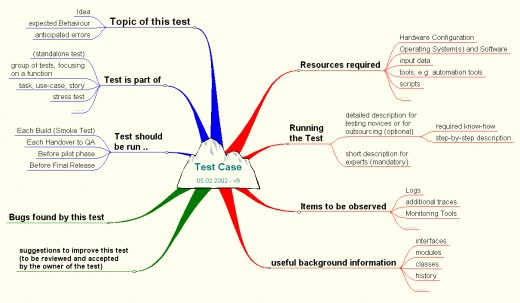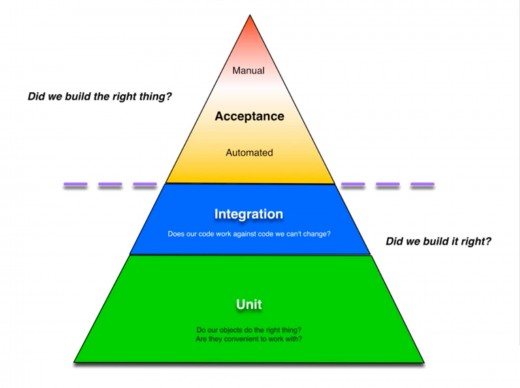What is the future of Software Testing?
We are living in a technology advanced world, where every day new technologies are being discovered. There is a tough competition between various software companies regarding implementing and upgrading their products and services. Today, customers want more software releases with new and smart features. However, no one likes to use defected software.

In order to provide the high-quality product that is free from defect, software testing is performed. It not only helps in detecting the bugs but also reveals the situations that could badly impact the usability of the product. Therefore, software testing has become an essential requirement for companies to verify that the software package functions as per the exact expectations defined by the requirements.
Apart from finding the software bugs, the importance of software testing can be described as follows:
-
It helps in discovering defects
-
Gives the end user the surety that the particular software has no faults
-
It assists in avoiding user detecting problems
-
Ensures an effective performance of the software application or product
-
Increases the reliability of the software
-
It ensures that products work as per the users expectations
-
Early detection of errors saves time as well as the high cost of fixing the errors
-
Helps in meeting the business and technical requirements
-
Keeps you stay in the business

Types of Testing
When testing a software application, various types of software testing are performed to achieve different objectives. There are mainly two types of software testings:
-
Manual testing
-
Automation testing
Manual Testing
As the name suggests, manual testing is all about testing a software manually. Generally, manual testing is performed without using any automated tool or any script. Being the most primitive of all testing types, manual testing requires more effort and time. Most of the companies carrying out software testing requires a new application to be tested manually prior to automation testing.

How manual testing is performed?
In this type of testing, the manual tester thoroughly test the software to find out any unexpected error or bug. In order to perform this testing, tester makes use of test plans and test cases to ensure the integrity of the manual testing. The aim of manual testing is to make sure that the particular application or software is free from defects or errors and works in conformity with the specified functional requirements. Furthermore, this testing also ensures that the reported defects during testing are fixed by the developers and the application has been re-tested by the testers. After going through various stages of manual testing, an error-free product is delivered to the end users.

What is a test case?
A test case in software engineering usually consist of an input and expected output. In includes a specific identifier, requirement references from a design specification, events, steps to be followed, input, output, expected results and the actual result.

Stages in manual testing
Manual testing involves various states such as:
-
Unit testing: Unit testing is generally performed to find the errors early in the development cycle. In this testing, each part of the program is tested separately to make sure that the individual parts are correct. This testing is mostly performed by the developers to ensure that the code that they have written meets the software requirements.
-
Integration testing: Integration testing is performed by integrating two different components together. The main aim of this type of testing is to test the interfaces between the units or modules. Moreover, two types of approaches are followed to perform this testing, “Bottom-up approach” and “Top down approach”. In the bottom-up approach, testing starts from the lowest or the innermost unit and gradually moves up. Whereas, in a top-down approach, testing starts from the topmost module and gradually moves towards the lower modules or units.
-
System testing: System testing is basically the testing of a complete software product. It is performed to ensure that the whole system or product works as per the users specifications. Additionally, this type of testing includes both functional and non-functional testing.
-
User acceptance testing: User acceptance testing is the final phase of software testing process. In this type of testing, the software is tested by the users to make sure it works properly and can handle required tasks in the real-world scenarios. Furthermore, this type of testing is also known as the beta testing, application testing or end user testing.

Some misconceptions about manual testing
Below is the list of some misconceptions that most of the people have in their mind about manual testing:
Manual testing can be performed by anyone: This is not the reality. Manual testing requires several skill sets. Some of the essential skills required for manual testing includes:
-
A thorough knowledge of software development life cycle
-
Knowledge of white box testing and Black box testing
-
Knowledge of different stages of software testing
-
Complete know-how of test case design technique for writing test cases
-
Ability to detect bugs and classifying them based on the priority or severity
Manual testing ensures a completely defected free product: Manual testing is undoubtedly an effective and good attempt to discover as many defects as possible. However, identifying each and every defect is not possible.
Manual testing is very easy to perform: Manual testing is not that easy as it looks. In many cases, it can be extremely challenging. Performing testing with minimal test cases may require high analytical skills.
Automated testing is more compelling than manual testing: It is a fact that 100 % automation can not be performed. Manual testing is also indispensable.

Career growth in manual testing
Today, every business want software that meets their business needs. For this purpose, they require testers to make sure that their products are free from bugs. Therefore, a large number of manual testing jobs are available in the testing field. Moreover, the growth opportunities in manual software testing field are also high. Starting from the initial stage, a tester can become a team lead, project lead, project manager, test architect, test consultant, usability expert, testing manager and so on.

Automation Testing
Automation testing is basically a software testing process in which, unlike manual testing, an automation tool is used to execute a test case. Test cases that are usually automated include high-risk test cases, repeatedly executed test cases, tedious and time-consuming test cases. In order to perform a successful automation, it is essential to select the right automation tool, testing process, and testing team. Furthermore, automation testing is essential because:
-
In some cases, work-flows, fields and negative scenarios, manual testing can be time and cost consuming
-
Testing multilingual sites manually can be quite a difficult task
-
Automation testing doesn't require a frequent human engagement
-
Automation testing ensures a speedy test execution

Automation tools
Below is the list of some commonly used automation tools.
-
WinRunner
-
IBM Rational Functional Tester
-
TestComplete
-
HP Quick Test Professional
-
WATIR
-
LaodRunner
-
Selenium
-
SilkTest
-
Testing Anywhere
-
Visual Studio Test Professional

Is automation testing overtaking manual testing?
For a successful testing, both the manual and automation testing methods go hand-in-hand. Choosing a particular testing totally depends on the type of project, project requirement, budget associated with the project and most importantly, which testing will be more beneficial to the project. It is vital to choose the right type of testing in a particular situation so as to achieve the best possible results.
In the coming years, the top priority of businesses across the globe will be to become more agile and flexible while delivering the high quality and reliable products. Great attention to these factors will result into the reduction of software application errors, enhanced security, and excellent performance. Hence, the future of software testing industry is really bright and expected to produce enormous jobs and career growth opportunities.
Happy Testing!!!








